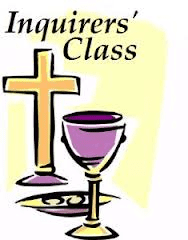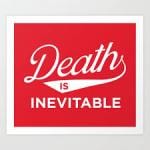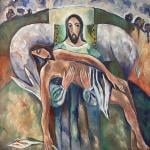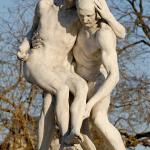Ian McEwan’s The Children Act is the story of Fiona Maye, an experienced and highly respected family court judge in London. The story centers on how a particular case impacts both her professional and personal life. A seventeen-year-old boy is hospitalized with leukemia; his regimen of treatment requires a cluster of powerful medicines, including one that produces anemia. To combat the anemia a blood transfusion is required—standard procedure. But the boy and his family are Jehovah’s Witnesses, and blood transfusions are prohibited by their religious beliefs. Fiona hears testimony from attorneys representing the interests of the hospital, the young man (three months away from his eighteenth birthday and legal majority), and his parents. In her judgment on the case, Judge Maye writes something that could have been written about me at age seventeen:
His childhood has been an uninterrupted monochrome exposure to a forceful view of the world and he cannot fail to have been conditioned by it.
Just how strongly the religious training and atmosphere of my youth influenced and shaped me was brought to my attention sharply not long ago as I spoke with a dozen or so folks (most of them over seventy,  I would guess) one Sunday morning in an “Inquirers’” class at the small Episcopal church where my friend Marsue is currently the temporary priest. Such classes are open to persons who wish to join the church officially, those who wish to renew their original baptismal vows so far removed in the distant past that what the vows say—let alone what they mean—has been forgotten, persons who wish to be “received” into the Episcopal church from other churches in which they were originally confirmed (most often disaffected Catholics), and anyone who is just looking for an hour’s worth of religious entertainment on a given Sunday. Knowing that my own religious upbringing in the Baptist church included brainwashing in the Bible, Marsue asked me if I would come to this particular meeting to talk about “Bible History.”
I would guess) one Sunday morning in an “Inquirers’” class at the small Episcopal church where my friend Marsue is currently the temporary priest. Such classes are open to persons who wish to join the church officially, those who wish to renew their original baptismal vows so far removed in the distant past that what the vows say—let alone what they mean—has been forgotten, persons who wish to be “received” into the Episcopal church from other churches in which they were originally confirmed (most often disaffected Catholics), and anyone who is just looking for an hour’s worth of religious entertainment on a given Sunday. Knowing that my own religious upbringing in the Baptist church included brainwashing in the Bible, Marsue asked me if I would come to this particular meeting to talk about “Bible History.”
No problem–I’ve done this for her before at a different church, and I knew that just relying on my sixty-plus year old foundation in things Biblical would be more than sufficient to introduce Episcopalian-wannabes who had probably never encountered Scripture first hand in their life to the Biblical lay of the land. At the beginning of class, I pulled out a book I had brought from home with some relevant maps in it, while Marsue rounded up a few Bibles. Directing everyone to the Table of Contents, I walked them through the patriarchs, the exodus, the time of the judges, the unified kingdom under David and Solomon, the divided kingdoms of Israel and Judah, Israel’s captivity in Assyria followed by Judah’s captivity in Babylon a century and a half later, capped by the Persian emperor Cyrus’ allowing the Hebrews to return to the devastated Promised Land to rebuild the Temple and their communities—all in under an hour.
It was fun to return to the Sunday School lessons of my youth (a Sunday School that was run like a real school—we were expected to learn things, subject to quizzes and exams). It was even more fun to come up for air occasionally and ask for questions. There weren’t many; everyone was looking at me as if I were a mutant or some sort of trained monkey. I was working without notes—no notes are necessary when plugging into things learned in-depth at a young age. As Aristotle says, if you want people to learn things they won’t forget, get them when they are very young.
After the crash course in Old Testament happenings, Marsue made a few comments that opened the door to broader issues. I had pointed out on the maps that the centerpiece of these historical events—Canaan—is remarkably tiny in the overall scope of things. Yet in our twenty-first century this part of the world continues to carry extraordinary importance for billions of people both politically and religiously. The three great monotheistic faiths—Judaism, Christianity, and Islam—all claim Abraham as their father and this part of the world as the central home of their faith. The violence and bloodshed of the current Middle East mirrors the violence of the Old Testament, just on a larger scale. The Palestinians of today have the same grievance against the still relatively new nation of Israel that the native people of the Promised Land had against the recently freed Hebrews of the Old Testament. We were here first.
Several years ago when running a similar class, an older member of the group—the church’s junior warden—spoke of various conversations he had with people of different faith commitments over the years. Whether during impromptu discussions with fellow soldiers during basic training or conversations with his next door neighbor, he noted how it has always struck him that people with significant faith differences actually share a great deal in common. ‘Why can’t we simply understand that we can believe in the same God in very different ways?” he wondered. Why all the hatred, the violence, the suspicion and judgmental attitudes?
Her Honor Fiona Maye runs headlong into the same issue as she considers her decision in the case of the Jehovah’s Witness teenager. She’s not a religious person herself, but whether religious or not, the Jehovah’s Witness belief that God’s will does not include blood transfusions, even if required to save a life, seems odd, peculiar, and irrational. Such apparently arbitrary rules are often criticized as cultish—something from which normal persons need to be protected or perhaps rescued. And yet, Fiona realizes, that one person’s cult is another person’s truth.
Religions, moral systems, her own included, were like peaks in a dense mountain range seen from a great distance, none obviously higher, more important, or truer than another. What was to judge?
Fiona’s position and status requires her to make a judgment, but she realizes that it cannot be on the basis of moral superiority or certainty. For what makes sense and what is true for a person is always largely shaped by that person’s experiences, some of which—especially those of one’s early youth—one does not freely choose.
I remember a number of years ago when my therapist, after listening during yet another session to my descriptions of how the impact of my religious heritage on my adult life had been, in my understanding at that time, largely negative, suggested to me that I might want to try Buddhism. If Christianity isn’t working, try something else. But I knew that I couldn’t do it, even if I wanted to. I’ve been working on this for a while now, and I realize more and more that although I have no basis on which to insist that my faith is the best way to package the truth, it is my truth. Each unique expression of faith, viewed from a distance, looks pretty much the same to an objective observer, which is a good thing for all persons of faith to remember as they get ready to go into religious warfare, virtual or actual, on a regular basis. But faith is never lived from a distance. It is inhabited up close. My monochrome exposure to faith as a child may have exploded over time into Technicolor, but the original imprint is still there. It is not mine to impose on anyone else, but it is mine.













